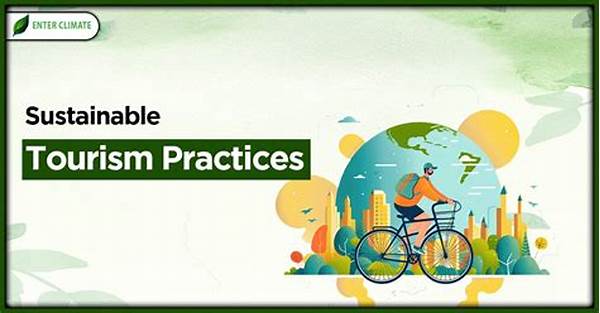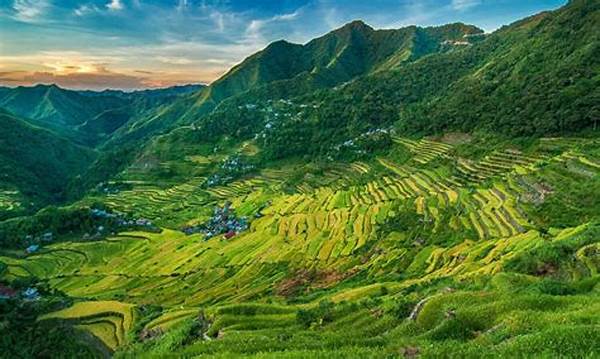Government Policies Promoting Natural Tourism
The allure of nature is undeniable. Who can resist the call of lush green forests, tranquil rivers, and majestic mountain peaks? A world where nature reigns supreme offers an escape from the concrete jungle, allowing travelers to reconnect with the earth. But the guardians of these breathtaking destinations are not just the humble park rangers or environmental activists; they’re also the governments that see the tremendous potential in natural tourism. Harnessing the intrinsic value of these natural wonders, various countries have begun crafting government policies promoting natural tourism. These strategic maneuvers not only aim to protect the environment but also to bolster economic growth and community livelihood while offering tourists unparalleled experiences.
Read More : Best Camping Facilities At Nature Tourism Park Sevillage Reviewed 2025
The seeds for government policies promoting natural tourism are often sown in the fertile grounds of unique selling points. Governments around the world recognize that standing out in the crowded tourism market requires something special, and what’s more special than untouched nature? Attention to these policies brings interest from travelers far and wide, from the seasoned eco-warrior eager to hike through pristine landscapes to the city dweller longing for a breath of fresh air. As interest builds, so does the desire. Promotions of this kind inspire dreams of distant lands where nature thrives, vibrant, and uncompromising. The final call to action is the seamless journey from desire to visit. Exclusive travel packages, humorous guides, and detailed blogs capturing the beauty and essence of these locations make it easy for travelers to pack their bags and explore.
Engage in the Educational and Fun Side of Government Policies Promoting Natural Tourism
In the world of journalism and blogging, the stories centered around government policies promoting natural tourism are both educational and alerting. The humorous anecdotes of locals who have witnessed transformations due to increased tourist influx; the creative storytelling of natural habitats rejuvenating while adapting to new eco-friendly infrastructures are both enlightening and engaging. It’s a game of marketing and storytelling, where testimonials from satisfied tourists become potent advertisements for aspiring travelers. Detailed features and emotional narratives highlight the powerful connection between nature and tourism, aimed at persuading readers to value and protect such treasures. From statistical analyses of tourism growth to the passionate opinions shared in interviews and editorials, every piece of content echoes a resounding message: nature is invaluable, and its preservation is imperative.
The Ripple Effect of Government Policies Promoting Natural Tourism
The ripple effect of government policies promoting natural tourism resonates far and wide. Local businesses flourish, communities find new sources of income, and the environment benefits from well-guided sustainable practices. But, as always, actions speak louder than words, making it essential to keep emotions and logic in balance. As policies unfold into tangible benefits, they stimulate economic vigor without compromising ecological wealth. And, for those who doubt, the rational side includes proven statistics, research findings, and comprehensive analyses. Descriptive narratives and interpretive insights provide the clarity needed to grasp the multifaceted dimensions of these policies.
Continuing this storytelling, here is an exploration of key structures that shape government policies promoting natural tourism, showcasing the complexity and impact of such initiatives.
—
The Framework of Government Policies Promoting Natural Tourism
To truly appreciate the multidimensional impact of government policies promoting natural tourism, it is essential to dissect its intricate framework. These policies often encompass a multitude of strategies, goals, and actions, all aimed at achieving a harmonious balance between tourism expansion and environmental conservation.
Building a Foundation for Sustainable Growth
Policies often begin with establishing a solid foundation for sustainable growth. Governments need to map out all potential natural attractions, assess their current states, and evaluate their capacities for tourism. Collaborative efforts with environmental scientists, local authorities, and community leaders ensure a thorough understanding of each location’s unique attributes and limitations. These assessments play a crucial role in formulating policies that enhance economic opportunities while safeguarding natural habitats.
Heading H2: Collaboration and Community Involvement
Community involvement stands as a cornerstone in developing successful government policies promoting natural tourism. By fostering collaboration between public entities and local communities, these policies can better address the unique needs and concerns of the affected areas. Engaging locals through consultations, workshops, and town hall meetings helps to ensure that policies reflect the desires and aspirations of those who know the land best. Furthermore, involving community members in the implementation of these policies empowers them to become active stewards of their environment.
Innovative Approaches and Technologies
Governments are increasingly leveraging innovative technologies to bolster their efforts in promoting natural tourism. Integrating smart solutions, such as digital guides and augmented reality experiences, not only enhances tourist satisfaction but also minimizes the ecological footprint of visitors. Environmental monitoring technologies allow for real-time data collection, facilitating rapid responses to unforeseen challenges. Furthermore, novel marketing strategies harness the power of digital platforms to spread awareness and entice global travelers.
Heading H3: Investment in Infrastructure and Accessibility
Read More : Sustainable Practices In Natural Tourism
Another critical component of these policies is investing in infrastructure and accessibility. Governments must ensure that tourists can reach remote natural destinations safely and conveniently. This often requires the development of eco-friendly transportation networks, sustainable accommodations, and visitor centers. Simultaneously, policies should prioritize the enhancement of local infrastructure to support the influx of tourists while preserving the region’s natural beauty.
Striking a Delicate Balance
Crafting effective government policies promoting natural tourism requires striking a delicate balance between human desires and environmental needs. Policymakers strive to maximize the economic benefits derived from tourism while ensuring the long-term sustainability and conservation of natural resources. This balance is achieved through comprehensive planning, continuous monitoring, and adaptive management practices that can accommodate changing circumstances and emerging challenges.
Evaluating Success and Adapting Strategies
Long-term success depends on the constant evaluation and adaptation of these policies. Governments must set measurable indicators and benchmarks to assess the effectiveness of their initiatives. Regular assessments enable policymakers to identify successes, shortcomings, and areas for improvement. By remaining flexible and responsive to changing conditions, government policies promoting natural tourism can continue to evolve to meet new demands and maintain their positive impact on both the economy and the environment.
—
Goals of Government Policies Promoting Natural Tourism
The objectives behind government policies promoting natural tourism are as diverse as the landscapes they seek to protect and promote. Here are some common goals:
Government policies promoting natural tourism are not just limited to economic enrichment; they are also steered by the enduring mission to protect and cherish our planet’s natural legacy for generations to come.
In a world filled with uncertainty and rapid change, finding solace in the simplicity and grandeur of nature is more important than ever. From breathtaking mountain ranges to shimmering coastal vistas, these natural wonders hold the power to inspire and rejuvenate, reminding us of what it truly means to be alive. The narratives of tourists witnessing these pristine landscapes for the first time resonate with a wide audience, sparking an emotional desire to preserve and cherish these gems.
In this compelling landscape of government policies promoting natural tourism, communities become champions of their stories, and travelers transform into ambassadors of conservation. Embracing these policies means embarking on a journey of balance and harmony, where the call to action is not only to visit but also to preserve, protect, and perpetuate the beauty of our world.


